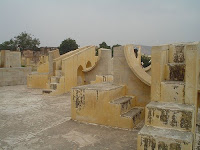LOCATION: TRIVANDRUM
ARCHITECT: LAURIE BAKER
In the year 1967 Laurie Baker was asked to design a centre for research in applied economics, Centre for Development Studies, at the outskirts of
Furthermore, I have found the answer to many spatial and planning problems by using the circle and the curve instead of the square and the straight line-and building becomes much more fun with the circle.”
Laurie Baker


computer centre & multipurpose hall................double skin...........


entrance............................................central block with library tower......


entrance to the central block & internal court...........
library block from inside............................................................
The CDS campus is a complete demonstration of ways in which brick can manipulated and utilized for various purposes. Brick has been used for structural walls, as form work for concrete columns, brick-jalis that give Baker’s work a unique identity, for built-in furniture, as outdoor paving, as arches for lintels and even as street light poles. Most of the buildings at this campus have double skin, where outer layer comprises of brick jalis that cuts down glare and allows cross-ventilation, so crucial in this climate. Almost all possible ways in which a jali-wall can be made, using brick, have been demonstrated at this campus. All the bricks used for the project were made close to the site. The material palette of this campus comprises of exposed bricks, exposed concrete, random rubble stone masonry, filler slab, wood for the openings, and red-oxide for flooring.
Reference:
- Gautam Bhatia, ed. 1994, Laurie Baker: Life, Work and Writings, Penguin Books India Pvt. Ltd.



















